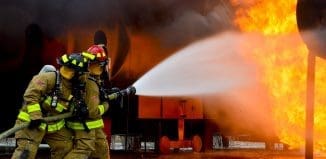The Outdated Protocol Of Fire Departments
This post is also available in:  עברית (Hebrew)
עברית (Hebrew)
Although the realities of the fire fighters’ job has changed, the governmental regulations have not. The number of calls to the fire department in the United States has gone down from 10.8 million in 1980 to 1.24 million in 2013. Furthermore, unlike emergency calls in the past that actually alerted a fire, nowadays most calls are about medical emergencies or situations that pose no threat to human lives, thus only bother fire departments everywhere.
On top of that, the standard procedure today when receiving an emergency call is still sending a fire truck along with the ambulance, so that when ambulance team appears, so do five fire fighters loaded with equipment to a scene that could be of a man having a heart attack or a homeless person fainting on the sidewalk. That is to say, fire fighters are being sent to the scene even when there is no fire to put out.
High-ranking officers in the fire department are fiercly frotecting existing procedures. They claim that fire fighters are often responsible for saving human lives when they arrive first at the scene. However, this “saving” isn’t due to the firemen’s high medical capabilities but a result of having too few state paramedics and ambulances, and quite a lot of fire trucks and fire stations both in the urban and rural areas.
The stagnation of fire-fighting protocol is getting worse due to an almost global civilian agreement on the importance of the fire fighting services as well as the power of the fire-fighters unions. The city of Toronto has tried in the past to change regulations, but encountered resistance from the city’s Professional Fire Fighters’ Association , who held an extensive public campaign at the end of which, the city council voted to increase the budget for the fire department.
Unnecessarily high operating costs are the most visible result of clinging to an expensive, “just-in-case” delivery model for this core public service. Each extra fire truck the city purchases costs about a million dollars and yet, the standard response in the fire departments and unions to the services’ slow reaction times is still “more stations, more trucks, more firemen”. Maybe we should rethink these models after all and change them completely?
Israel has also heard much criticism on its fire fighting services, but in an opposite way than that in the United States. The criticism was heard mostly after the fire in the Carmel mountain in 2010 and was focused on a continuing lack of modern equipment and manpower. In the aerial fire fighting, for example, the services relied on private companies’ general aviation airplanes that provide agriculture services rather than using designated airplanes for the missions. After the terrible fire in the Carmel mountain, however, the Israeli government has approved in the beginning of 2011 the transferring of the fire department from the Ministry of Interior to the Ministry of Defense, the establishing of an aerial fire-fighting fleet and other reforms. Let’s hope we won’t be needing another failure to understand the significance of the fire-fighting and rescue capabilities.






























